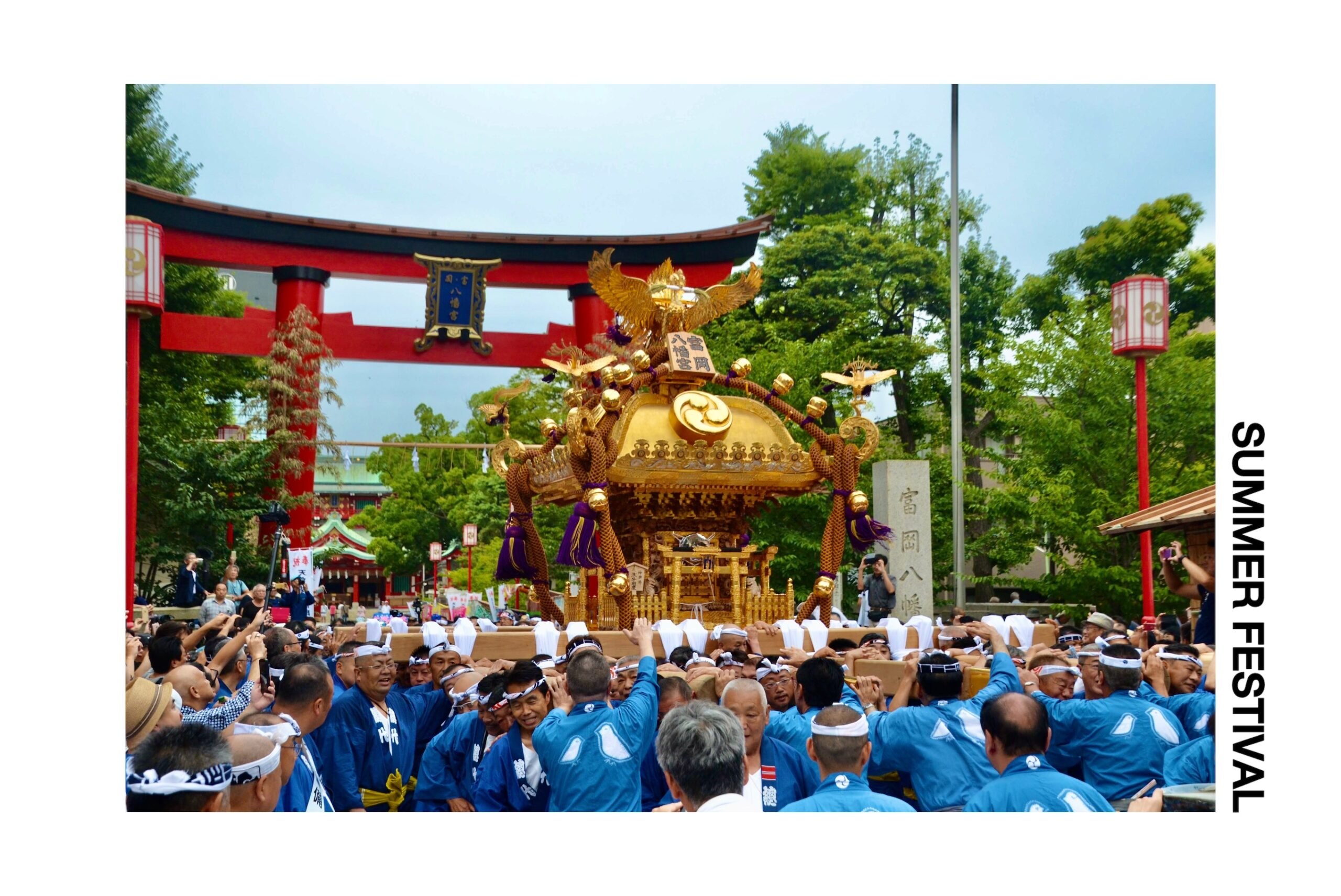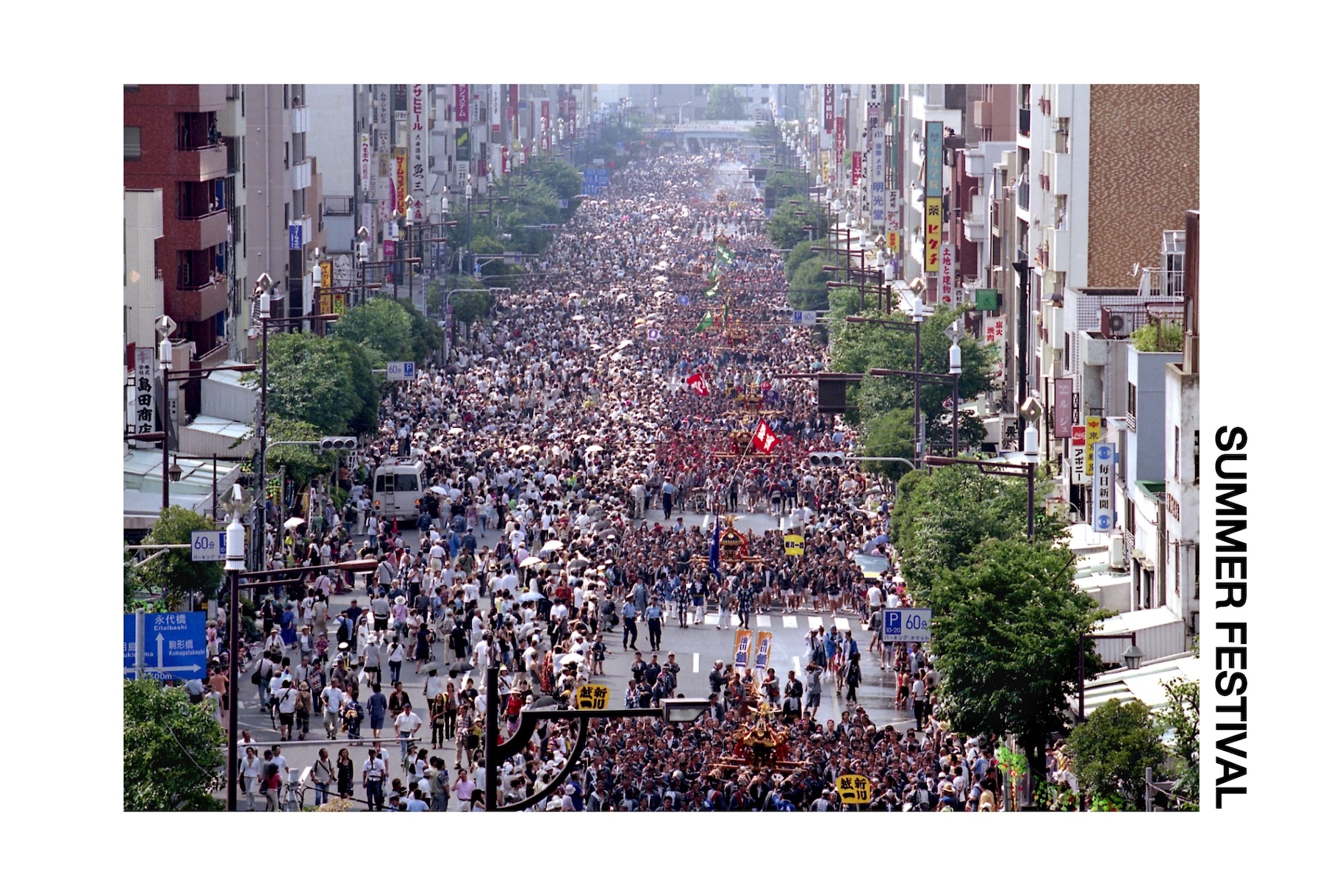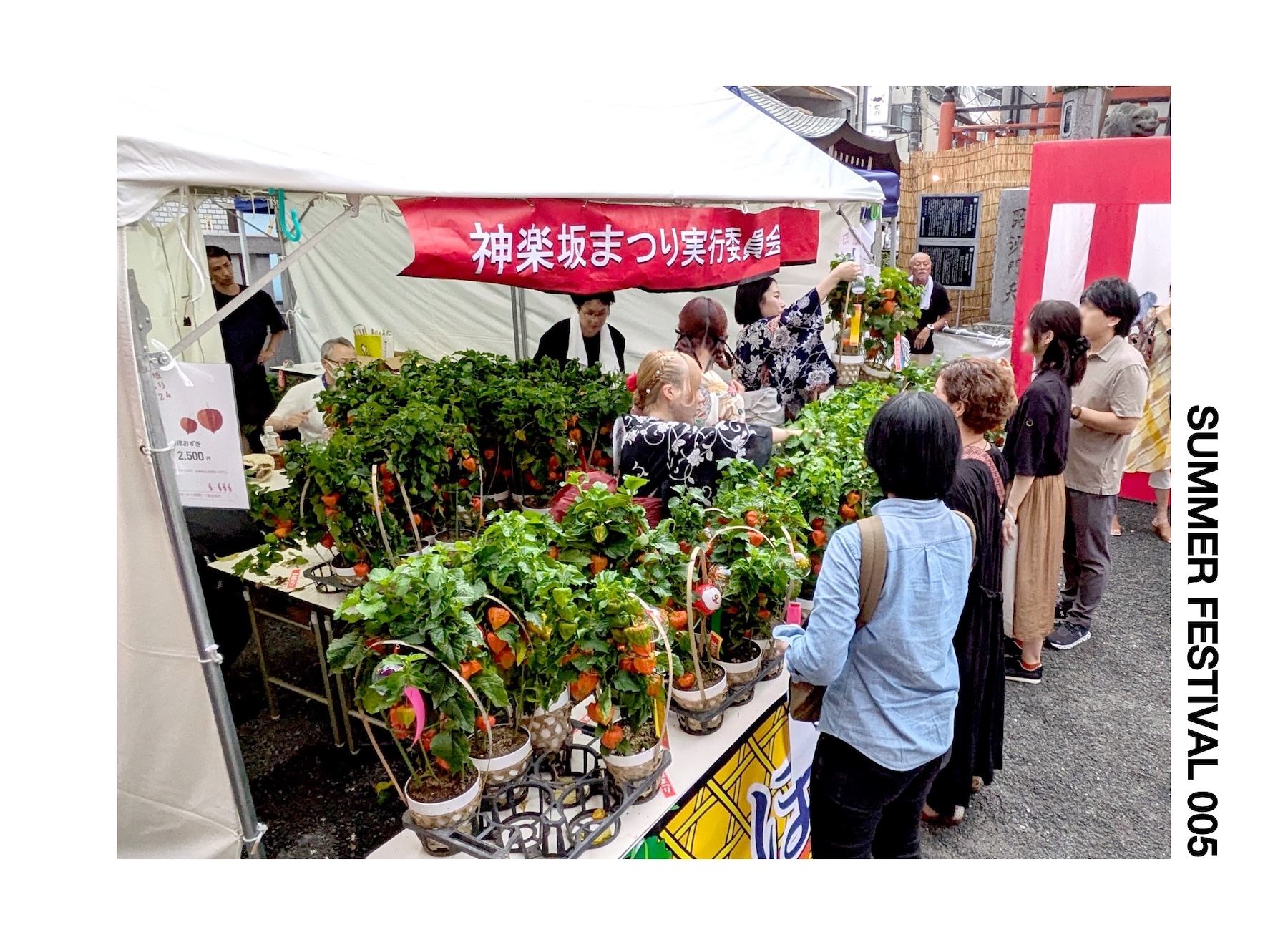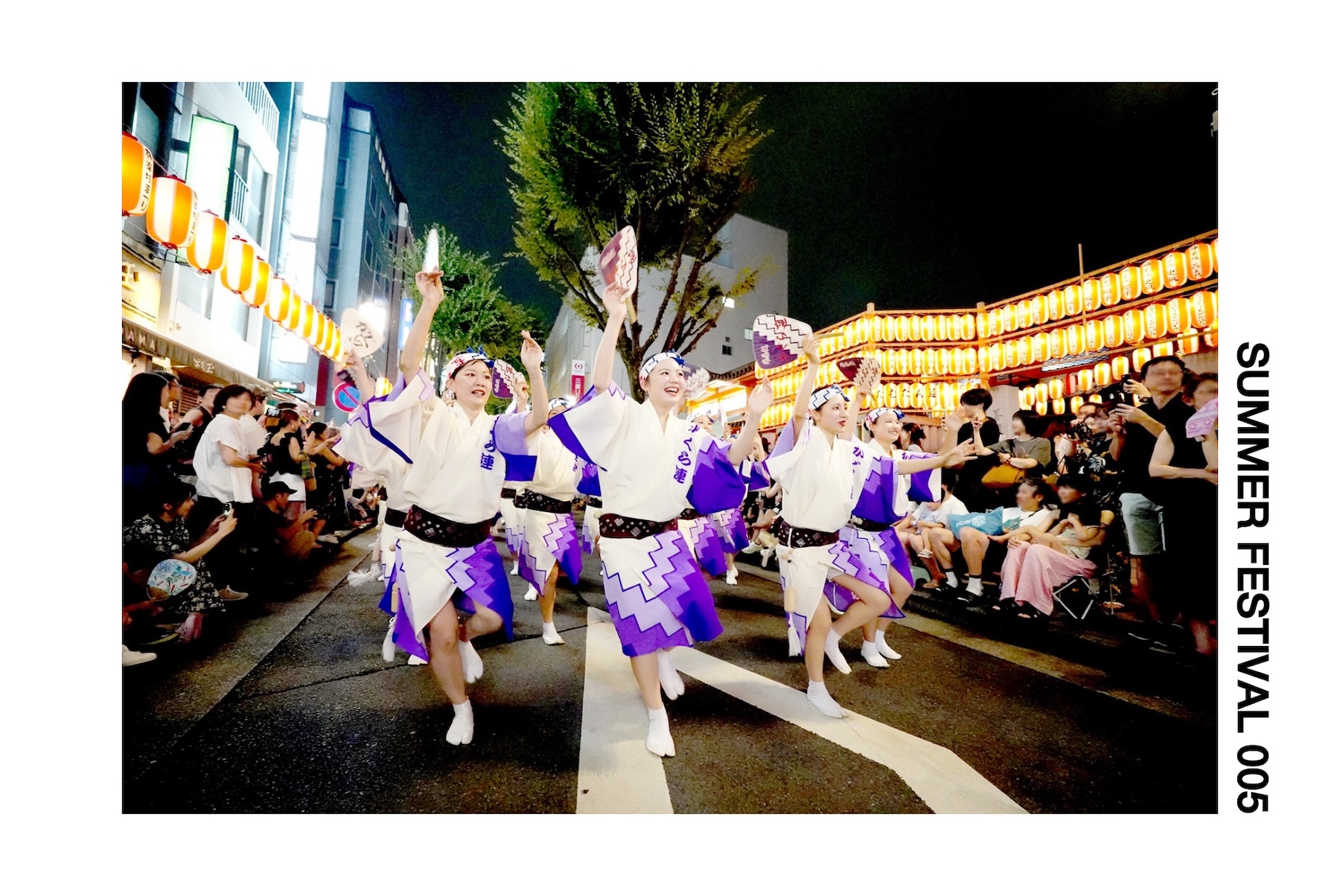CATEGORY
AREA

Summer festivals and traditional events throughout Tokyo are vibrant celebrations where Japan's rich history, culture, and rhythm of daily life come alive. Streets fill with the energy of mikoshi (divine palanquins), dashi (floats), traditional bon odori (bon festival dancing), and bustling festival stalls. At the same time, people dressed in yukata (summer robes) enjoy the warm evening air. Initially rooted in Shinto rituals praying for bountiful harvests and good health, these celebrations have evolved from sacred ceremonies of prayer and remembrance into accessible events that welcome visitors from around the world. They offer an authentic taste of the Japanese spirit and represent the very essence of Tokyo's summer charm. Here are some of the most celebrated summer festivals and traditional events.
Tokyo's summer is a season of unique character, where matsuri (traditional summer festivals) and ceremonial events dating back to the Edo period unfold across the city, creating a harmonious blend of festivity and solemnity, energy, and contemplation. These summer festivals are far more than mere entertainment—they are deeply rooted in Japan's extensive history and culture, carrying profound spiritual significance. Born initially from Shinto rituals seeking abundant harvests and protection from illness and Buddhist ceremonies welcoming and honoring ancestral spirits during the Obon season, these celebrations have evolved over centuries into beloved community traditions that define local identity.
For instance, festivals featuring mikoshi (divine palanquins) carried through neighborhood streets are sacred ceremonies that invite deities into communities, blessing them with peace and prosperity. The passionate energy and powerful spectacle draw crowds of onlookers. In contrast, bon dances performed to the rhythm of taiko drums at twilight create peaceful moments for honoring ancestral spirits and bringing communities together in harmony. Yatai (festival food stalls), essential to any summer festival, offers traditional cuisine and time-honored games, providing visitors with authentic glimpses into Japanese folk culture.
Events like “Sumidagawa Toro Nagashi (The Sumida River Lantern Floating)” offer a more contemplative experience, where participants quietly float illuminated lanterns on the water as offerings of prayer, creating a serene contrast to the exuberant celebrations and allowing visitors to experience Japan's profound sense of tranquility.Tokyo's atmospheric summer festivals and traditional events offer complete sensory immersion into the magic of Japanese summer—a truly special experience.
Every early August, “Asagaya Tanabata Festival” transforms the Asagaya Pearl Center Shopping Street in Suginami Ward into a spectacular celebration. This beloved community festival began in 1954, during the post-war reconstruction period, emerging from hopes for recovery and local revitalization. It has since grown into one of Tokyo's most representative Tanabata festivals. Along the 700-meter arcade of the shopping street, vibrant large fukinagashi (streamers) and massive handcrafted papier-mache displays made from paper and bamboo create a dazzling canopy that delights visitors.
The decorations are created by local merchants and community volunteers, often featuring popular characters and topical themes of the moment, making them popular spots for photography. The festival also boasts an impressive array of local food stalls, attracting nearly one million families and tourists annually. It's a warm, welcoming celebration where locals and visitors come together in joyful unity.
Colorful streamers and papier-mache decorations fill the ceiling of the Asagaya Pearl Center Shopping Street during the Tanabata Festival. (Photo courtesy: Chuo Line Aruaru Project Executive Committee)
69th Asagaya Tanabata Festival
● Dates: August 7-11, 2025
● Hours: 10:00-22:00 (August 7-10), 10:00-21:00 (August 11)
Venue/Asagaya Pearl Center Shopping Street
http://www.asagaya.or.jp/
“Tokyo Koenji Awa-Odori”, held annually in August in Suginami Ward's Koenji district, is a magnificent festival celebrating Awa-Odori, a traditional Japanese dance originating from Tokushima Prefecture. Beginning in 1957 as a community revitalization initiative, it has evolved into a major Tokyo event, attracting approximately one million visitors for two days. The spectacular sight of about 10,000 dancers in colorful costumes moving through the streets to the rhythm of drums and flutes, chanting "Yatto-sa!" in unison, is absolutely breathtaking.
The dance styles include the powerful otoko-odori (men's dance) and the graceful onna-odori (women's dance), each with its own distinct charm. The infectious energy shared between dancers and spectators spreading throughout Koenji's streets is genuinely remarkable. “Nigiwai Hiroba (Event Squares)” welcomes visitors at the north and south station entrances, as well as in the central park, offering a wonderful array of street food experiences. Original “Tokyo Koenji Awa-Odori” merchandise is also available for purchase. This extraordinary summer event allows visitors to experience traditional Japanese culture while joining in the celebration with Koenji's local community.
66th Tokyo Koenji Awa-Odori
● Dates: August 23-24, 2025
● Hours: 17:00-20:00
Venue: Shopping streets adjacent to the Koenji Station and Konan-dori Street
https://www.koenji-awaodori.com/
“Fukagawa Hachiman Festival”, held annually in mid-August, is the annual festival of Tomioka Hachimangu Shrine in Koto Ward, recognized as one of Tokyo's three great Edo festivals. The main attraction is the mizukake mikoshi (water-splashing mikoshi), where spectators enthusiastically splash water on the passing mikoshis. Under the scorching summer sun, the unity created when audiences shower the carriers with water—as a sign of purification and encouragement—while they march through the streets chanting the traditional "Wasshoi, wasshoi!" is a sight unique to this festival.
During the grand festival held every three years, over 50 mikoshis of various sizes parade through the town in an overwhelming display of power. The sound of drums and chanting fills the air as shrine bearers dressed in traditional happi coats unite with earth-shaking intensity, creating a scene that truly embodies the spirit of Edo, carried forward to this day. This vibrant traditional event preserves Edo's rich cultural heritage and connects people, captivating numerous spectators.
During the grand festival held every three years, over 50 neighborhood mikoshi groups participate in the combined procession, with buckets and containers used to generously splash purifying water on the shrines as they parade through the town.
Fukagawa Hachiman Festival (Tomioka Hachimangu Shrine Festival) - Second Shrine Procession
● Date: August 17, 2025
● Hours: 7:00-16:00
Venue/Tomioka Hachimangu Shrine
http://www.tomiokahachimangu.or.jp/annai/maturi/maturih1.html
“Sumidagawa Toro Nagasi (The Sumida River Lantern Floating)” is a summer ceremony held on the Sumida River to honor ancestral spirits and express wishes for peace and harmony. Beginning the year after the war ended, this annual summer event carries deep meaning—floating lanterns on the Sumida River, where many lives were lost during wartime air raids, to remember the departed and offer quiet solace to souls. However, the ceremony was suspended for a period in 1966. Following the development of the Sumida River waterfront terraces and riverside improvements, it was revived in 2005.
Following the Great East Japan Earthquake, an increasing number of people have begun writing wishes for recovery and hope for the future on the lanterns, similar to Tanabata wish paper strips. The lanterns are small paper cylinders containing candles. At twilight, as many people float lanterns inscribed with their thoughts and wishes, a magical scene unfolds with countless lights gently bobbing on the water's surface. Anyone can purchase a lantern to inscribe their wishes and set afloat, making it a recommended experience. This gathering place, which attracts visitors from around the world, offers a chance to experience Asakusa's summer atmosphere in a tranquil and community-oriented setting.
The beautiful illumination of the Azuma Bridge over the Sumida River provides a backdrop for enjoying the night views of Asakusa's historic buildings and Tokyo Skytree.
Toro Nagashi (water lantern) on Sumida River 2025
● Date: August 16, 2025
● Hours: 18:30-20:15
Venue: Toro Nagashi spot, Azumabashi Waterfront Terrace on the Sumida river
https://e-asakusa.jp/culture-experience/105472
In Tokyo's Kagurazaka district, with its stone-paved alleys and atmospheric streetscapes, the “Kagurazaka Festival” serves as the neighborhood's summer tradition. Held annually in late July, this festival brings together locals and visitors in a summer celebration. The festival allows participants to enjoy the celebrations while exploring Kagurazaka's streets, which retain the essence of Edo-period Japan. The festival spans four days, with the first two days featuring a "Hōzuki Market" and the final two days hosting an "Awa-Odori Competition."
The "Hōzuki Market" originates from an Edo period tradition based on the "46,000 Days" temple fair at Sensoji Temple, where hōzuki (ground cherry) plants were sold as medicinal herbs. The "Awa-Odori Competition" fills Kagurazaka Street with the dynamic energy of authentic Awa-Odori dance rooted in Tokushima traditions. The “Kagurazaka Festival”, where ancient culture meets contemporary celebration, offers a unique summer experience for fully appreciating "timeless Japan" through all five senses. This sophisticated adult neighborhood provides a precious opportunity to savor both Japanese tradition and local charm.
Kagurazaka's historic summer festival offers two festivals in one, making it ideal for first-time visitors to Japanese celebrations.
51st Kagurazaka Festival
Dates / July 23-26, 2025
● Hours: 17:00-21:00 (August 23-24), 19:00-21:00 (August 25-26)
Venue: In the vicinity along Kagurazaka-dori Street, between Kagurazaka 1-chome and Kagurazaka-ue, Shinjuku City
https://www.kagurazaka.in/kagurazaka_festival/51th/
"Yukata de Ginbura (strolling around Ginza wearing Yukata)" is an event celebrating Tokyo's Ginza district where participants dress in yukata (traditional summer robes). Since 2007, this event has offered visitors a chance to experience the summer evening atmosphere of Ginza. It began as part of the "Holiday Promenade," commemorating the “pedestrian paradise” that started in 1970. Ginza's main Chuo Street becomes a pedestrian zone, with the district beautifully decorated with traditional Japanese music and the warm glow of yagura (festival tower) lanterns.
The event features various attractions, including the "Ginza Meiten Yatai (Famous Store’s Stalls)," which showcase Ginza's renowned establishments, performances by the festival’s performing group "Dengakuza," and special benefits for visitors wearing yukata. Traditional Japanese culture experience corners allow participants to feel the essence of Japanese summer. This year, operating hours have been extended to accommodate more visitors. The "Great Ginza Bon Dance" performed on a temporary yagura built on Ginza Street is also a highlight. "Ginbura" is said to derive from "strolling around Ginza." "Yukata de Ginbura" is a unique festival that allows visitors to experience traditional Japanese beauty in modern Tokyo.
Yukata de Gin-bura Festival 2025
● Date: August 2, 2025
● Hours: 16:00-20:00
Venue: Commercial sites and shops along Ginza-dori 1-chome to 8-chome
https://ginbura.ginza.jp/
Tokyo's summer festivals offer extraordinary experiences for encountering Japanese tradition, culture, and the warmth of its people. Dressed in yukata, enjoying palanquin parades, dancing, and bustling food stalls will surely create unforgettable memories of Japanese summer. Why not add a summer festival to your travel memories?





